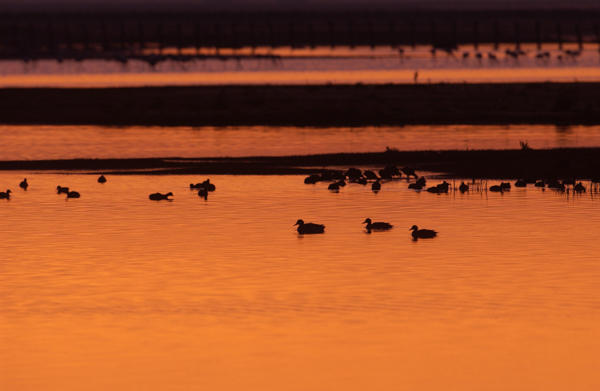Species–area relationships are the product of many ecological processes and their interactions. Explanations for the species–area relationship (SAR) have focused on separating putative niche-based mechanisms that correlate with area from sampling effects caused by patches with more individuals containing more species than patches with fewer individuals. The hypothesis that SARs in breeding waterfowl communities are caused by sampling effects was tested (i.e. random placement from the regional species pool). Consistent with the sampling effects hypothesis, observed SARs were accurately predicted by null models, which randomly allocated ducks to ponds, in three different years and for diving and dabbling duck guilds. This is the first demonstration that null models can predict SARs in waterbirds or any other aquatic organisms. Observed patterns of species association, however, were not well predicted by null models as in all years there was less observed segregation among species (i.e. more aggregation) than under the random expectation, suggesting that intraspecific competition could play a role in structuring duck communities. Taken together, results indicate that when emergent properties of ecological communities such as the SAR appear to be caused by random processes, analyses of species associations can be critical in revealing the importance of niche-based processes (e.g. competition) in structuring ecological communities. informacion[at]ebd.csic.es Bidwell et al (2014) Random placement models predict species–area relationships in duck communities despite species aggregation. Oikos DOI: 10.1111/oik.00821
http://onlinelibrary.wiley.com/doi/10.1111/oik.00821/abstract;jsessionid=6F2916A7C768D81F95C94CAA9594794D.f04t04  Latest News
Latest News
Back

